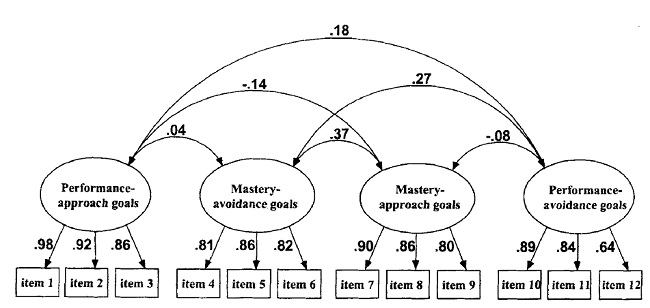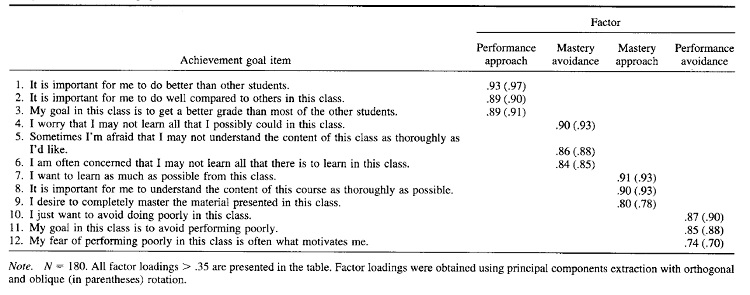Learn about the 2X2 achievement goal framework and understand a better way to view (and plan) your goals.
What is the 2×2 achievement goal framework?
Until 2001, when this study was published, goals were divided into three types: mastery, performance-approach, and performance-avoidance:
| Mastery | Performance-Approach | Performance-Avoidance |
|---|---|---|
| I will score higher than last time. | I will score the highest in my class. | I will avoid scoring worse than my classmates. |
| I will exercise three times a week. | I will look sexy by losing 5 pounds. | I will stop looking ugly by losing 5 pounds. |
| I will learn how to get my work done better and faster. | I will get a good performance review. | I will avoid getting negative feedback. |
A mastery goal was one where a person tried to accomplish something in absolute or intrapersonal terms, e.g. setting a new personal best or learning a new skill.
A performance-approach goal was one where a person tried to do better than their peers, e.g. scoring higher or getting promoted.
A performance-avoidance goal was one where a person tried to avoid doing worse than their peers, e.g. avoid embarrassment or negative feedback.
Until this study, it was assumed that mastery goals were the best, performance-approach goals were sometimes good and sometimes bad, and performance-avoidance goals were always bad. The implicit assumption was there were no bad mastery goals (in other words, no mastery-avoidance goals.)
This study challenged those assumptions by first proving that master-avoidance goals exist, and second proving that each goal type can be useful, depending on the circumstances.
Goal Experiments 1 & 2
Exploratory factor analysis was used to break down the 12 goal setting questions into 4 factors, as seen below. Confirmatory factor analysis was later used to show that mastery-avoidance and mastery-approach better fit the data than mastery alone.
These questions in turn were derived from a series of pilot studies. The questions for performance-approach, performance-avoidance, and mastery-approach were taken from prior questionnaires, while questions for mastery-avoidance were created. Once combined, the factor analysis above was used to confirm that each set of questions represented and exposed different goal-setting components. The questions used and the factor they correspond to can be seen below:
Those with a high motive to achieve were found to be more likely to use approach goals, while those with a high motive to avoid failure were found to be more likely to use avoidance goals.
Find out more about approach goals -vs- avoidance goals.
Goal Experiment 3
Those more likely to use performance-approach goals were more likely to have higher exam scores, while those more likely to use performance-avoidance goals were more likely to have lower exam scores.
On the other hand, those more likely to use performance-approach goals were more likely to visit the health center, while those more likely to use mastery-approach goals were less likely.
Full study here.
Elliot, A. J., & McGregor, H. A. (2001). A 2 x 2 achievement goal framework.Journal of personality and social psychology, 80(3), 501-519.




Thanks for the summary of this interesting study.
I’ve been trying to find details on what exactly is a mastery goal. The examples here are helpful but also leave me with more questions. “I will learn how to get my work done better and faster.” This seems vague. What are the metrics for assessing “better” and “faster”? How do you know when you’ve learned enough? Is the goal to actually work better/faster, or just to learn skills to do so?
What kind of goal would it be if I said, “I will get 100% on the exam” or “I will earn $5,000 next month”. These goals don’t compare yourself to others like the Performance goal examples, but they also don’t involve relative comparisons with your previous performance, or focus on learning/skill-building, like the examples of Mastery goals.
Thanks for your help!